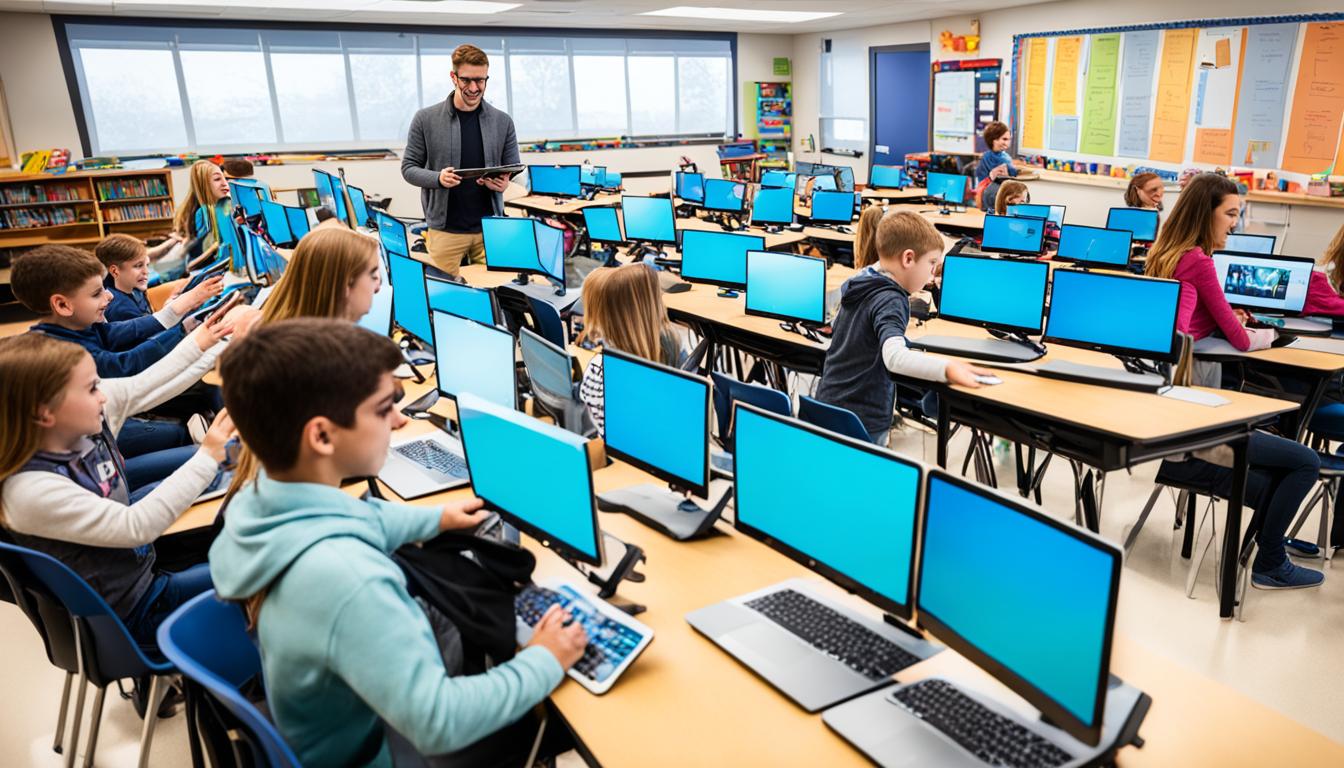Improve Your Discovering Experience with Cutting-Edge Education Operatings Systems
Improve Your Discovering Experience with Cutting-Edge Education Operatings Systems
Blog Article
Comprehensive Organization Guides for Progressing Modern Technology Education And Learning in Schools and Colleges
The assimilation of technology education and learning right into college and university curricula has come to be a vital essential in preparing students for an increasingly digital labor force. What particular techniques can be adopted to optimize their impact on both students and instructors?
Importance of Technology Education And Learning
As modern technology remains to advance at an unprecedented speed, the importance of modern technology education has actually become increasingly obvious in today's society. The assimilation of innovation right into different elements of life demands that individuals have a fundamental understanding of technological ideas and applications. This understanding not just enhances employability yet also cultivates essential thinking and analytic skills necessary for navigating a dynamic workforce.
In instructional institutions, innovation education and learning gears up students with the capability to adjust to rapid adjustments in sectors driven by advancement. It encourages creative thinking and equips learners to engage with emerging modern technologies, from expert system to data analytics. Technology education and learning advertises electronic proficiency, which is crucial in an era where information is easily available yet typically misleading.

Key Components of Effective Guides
Reliable guides for modern technology education should incorporate a number of vital parts to make sure that students acquire one of the most from their experiences. A distinct educational program is crucial, outlining the objectives, learning results, and the skills to be developed. This curriculum ought to be on a regular basis updated to mirror the quickly developing technological landscape, guaranteeing importance and applicability.
2nd, extensive resources that consist of books, online materials, and hands-on devices are crucial. These sources should be accessible and varied, dealing with various learning preferences and designs. Additionally, incorporating real-world circumstances and situation researches can enhance understanding and interaction.
Third, assessment strategies should be included to review learner progression effectively. These evaluations ought to be differed, including cumulative and developmental examinations that straighten with the learning objectives.
Additionally, specialist advancement chances for instructors are vital. Training programs and workshops can equip educators with the most recent pedagogical strategies and technical advancements.
Finally, fostering a collective knowing setting urges peer interaction and understanding sharing. By consisting of these key components, guides for innovation education can considerably improve the discovering experience, preparing pupils for future difficulties in a progressively digital world.
Structure Market Partnerships
Building strong sector partnerships is a vital element of boosting technology education and learning. These cooperations between schools and services develop a dynamic ecological community that benefits employers, educators, and students alike. By fostering partnerships with sector universities, schools and leaders can align their educational programs with the advancing needs of the task market, ensuring that students get appropriate abilities and expertise.
The development of teaching fellowships, instructions, and mentorship programs functions as a cornerstone of these partnerships. Such chances provide pupils with hands-on experience, improving their employability and practical understanding of technology applications. In addition, market companions can offer insights right into arising patterns and technological improvements, allowing instructors to adapt their mentor techniques accordingly.
Moreover, collaborations can assist in accessibility to resources, such as devices, software program, and financing for research study projects. These payments enrich the finding out atmosphere and allow institutions to stay at the leading edge of technical development. Eventually, constructing robust industry collaborations is essential for cultivating an experienced workforce that fulfills the needs these days's swiftly altering technological landscape, while also driving financial development and competitiveness in the broader area.
Implementing Innovation Programs
Implementing innovation programs within universities needs a strategic method look at more info that focuses on both educational program advancement and source allocation. To start effective technology assimilation, institutions should first analyze their existing framework and identify voids in resources, including hardware, software program, and workers training. This analysis allows schools and colleges to create a tailored strategy that lines up with their specific academic objectives.
Next, it is vital to establish a comprehensive curriculum that integrates emerging technologies and industry criteria. Collaborating with teachers, sector experts, and stakeholders can make sure that the curriculum stays appropriate and reliable in preparing students for the workforce (Education). Furthermore, expert development for faculty is essential, as it outfits instructors with the abilities essential to successfully show brand-new modern technologies
Moreover, organizations should highlight the value of hands-on understanding experiences, such as workshops and labs, that enable students to apply theoretical understanding in practical settings. This experiential approach enhances involvement and cultivates important thinking. Ultimately, safeguarding lasting funding via gives and partnerships can help expand and keep modern technology programs, making sure lasting success and versatility in an ever-evolving technological landscape.
Determining Success and End Results
Examining the success and results of innovation education and learning programs is important for confirming their effect and leading future enhancements. Reliable measurement frameworks must encompass both qualitative and quantitative metrics, offering a thorough view of program efficiency. Trick efficiency signs (KPIs) such as student registration figures, retention prices, and course completion percents provide beneficial measurable data.

Incorporating standardized analyses can even more examine pupils' technical competencies and readiness for the labor force. Benchmarking against similar institutions enables for see contextually relevant comparisons, highlighting areas for development.
Ultimately, the continuous examination of technology education programs fosters a society of improvement, guaranteeing that they evolve abreast with market demands and instructional criteria. By systematically determining success, organizations can not just demonstrate responsibility to stakeholders but also enhance their offerings, therefore enhancing the finding out experience and preparing students for the ever-changing technological landscape.
Final Thought

The assimilation of technology education right into college and university educational program has become a critical vital in preparing students for an increasingly electronic labor force.As innovation continues to advance at an unmatched rate, the relevance of innovation education and learning has actually come to be significantly noticeable in today's society.In academic establishments, modern technology education and learning gears up trainees with the capacity to adjust to rapid adjustments in industries driven by technology. By prioritizing innovation education and learning, organizations can grow a generation of educated people capable of leveraging technology for societal and individual development. The execution of robust assessment strategies allows establishments to determine success and outcomes, inevitably enhancing the general effectiveness of innovation education campaigns and preparing pupils for future difficulties.
Report this page